It seems that mobile device manufacturers are doing everything to make it difficult for users to choose smartphones with a good camera. It only seems that they have found the perfect camera phone, and already another company assures that its model has the best photo and video shooting.
But when compiling the rating of the smartphone with the best camera in 2019, I was guided not by marketing assurances, but by DxOMark benchmark resultstrusted not only by reputable publications, but also by leaders of the mobile market, such as Xiaomi.
Read updated smartphone camera rating 2020.
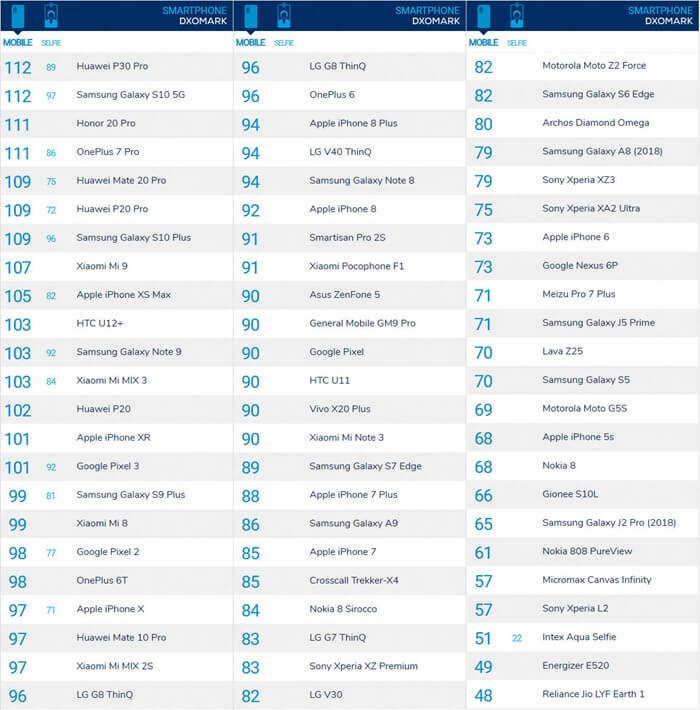
10. HTC U12 +
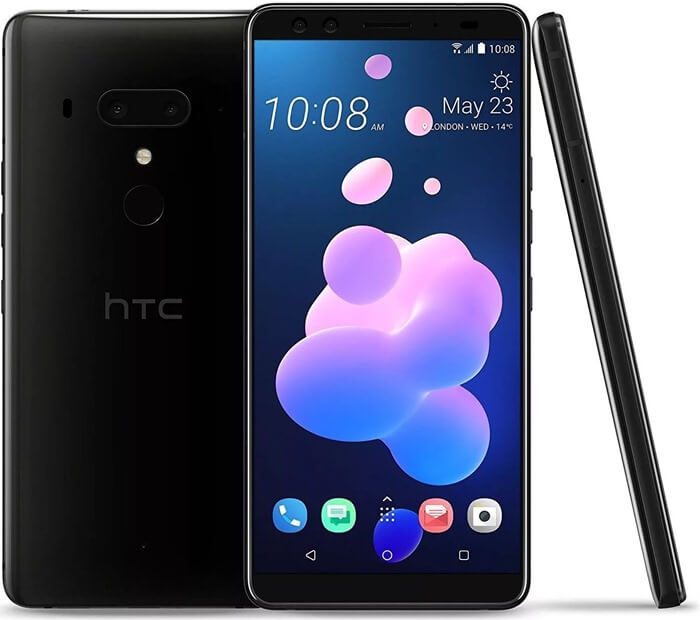 The average price is 49,990 rubles.
The average price is 49,990 rubles.
Characteristics:
- smartphone with Android 8.0
- support for two SIM-cards
- screen 6 ″, resolution 2880 × 1440
- dual camera 12 MP / 16 MP, autofocus
- memory 128 GB, memory card slot
- 3G, 4G LTE, LTE-A, Wi-Fi, Bluetooth, NFC, GPS, GLONASS
- RAM 6 GB
- battery 3500 mAh
- weight 188 g, WxHxT 73.90 × 156.60 × 9.70 mm
The DxOMark 2019 smartphone camera rating is opened by a model that is not impressive at first glance, which has a strict and even minimalist design.
However, it is worth examining the characteristics of the main camera of the U12 +, as it becomes clear that this is a real diamond of the mobile market.
Its main camera supports optical image stabilization. The secondary sensor is a telephoto lens with 2x optical and 10x digital zoom.
There are two 8MP wide-angle sensors on the front of the smartphone, they serve not only for selfies, but also for quick face unlocking.
The most interesting feature of HTC U12 Plus is support for the new version of Edge Sense compression technology. It allows the smartphone to “feel” where your hand is.
For example, if you hold your cell phone like you're trying to use portrait mode, moving it slightly will no longer cause the screen to auto-rotate.
The Snapdragon 845 chipset that sits inside the HTC U12 + is no longer the best. However, its capabilities are more than enough for any games and work with several resource-intensive applications.
pros: waterproof, excellent sound quality, unusual translucent body, fast charging.
Minuses: medium-capacity battery, no 3.5 mm audio jack and adapter included.
9. Apple iPhone Xs Max
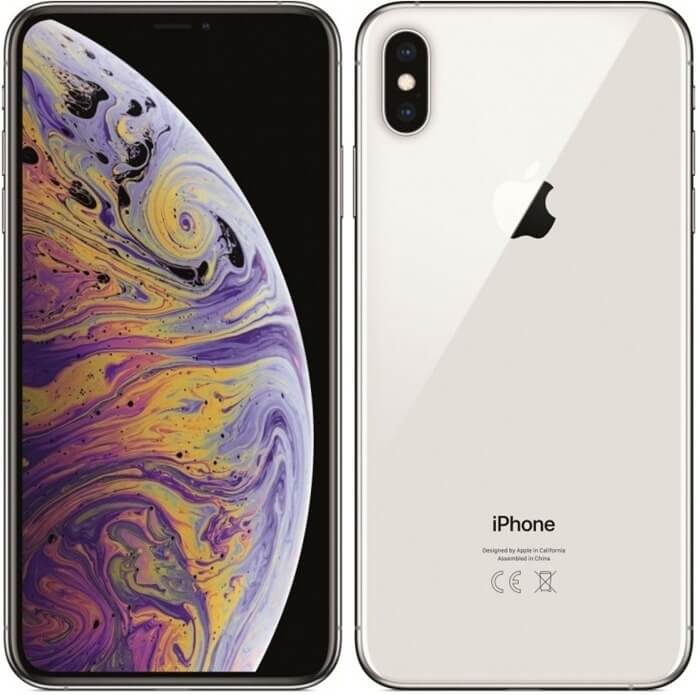 The average price is 109,990 rubles.
The average price is 109,990 rubles.
Characteristics:
- smartphone with iOS 12
- support for two SIM-cards (nano SIM + eSIM)
- screen 6.5 ″, resolution 2688 × 1242
- dual camera 12 MP / 12 MP, autofocus
- 512 GB memory, no memory card slot
- 3G, 4G LTE, LTE-A, Wi-Fi, Bluetooth, NFC, GPS, GLONASS
- weight 208 g, WxHxT 77.40 × 157.50 × 7.70 mm
Although this device cannot be called the best in the smartphone camera rating of 2019, it can be called the best iPhone to date.
It offers a 6.5-inch bezel-less screen, and powerful dual rear cameras with f / 1.8 and f / 2.4 apertures, respectively. Both sensors have optical image stabilization. And the presence of 2x optical zoom helps to capture details at a great distance.
There are a number of different lighting effects in the camera settings that are worth trying. For example, the default setting, Natural Light, works well in brightly lit places, while Studio Light brightens up the face — useful for darker shooting conditions.
By default, the iPhone Xs Max will shoot with Smart HDR enabled.While this is a great way to ensure balanced shots in most situations, it can sometimes be useful to turn it off (in the main Settings menu under the Camera subsection).
iPhone Xs Max is equipped with the fastest Apple A12 Bionic processor. It ensures uninterrupted operation of the device even in the most demanding applications
pros: "Business card" - Face ID face recognition, there is fast and wireless charging, there is water and dust protection.
Minuses: no memory card slot, high price, slippery "back".
8. Xiaomi Mi 9
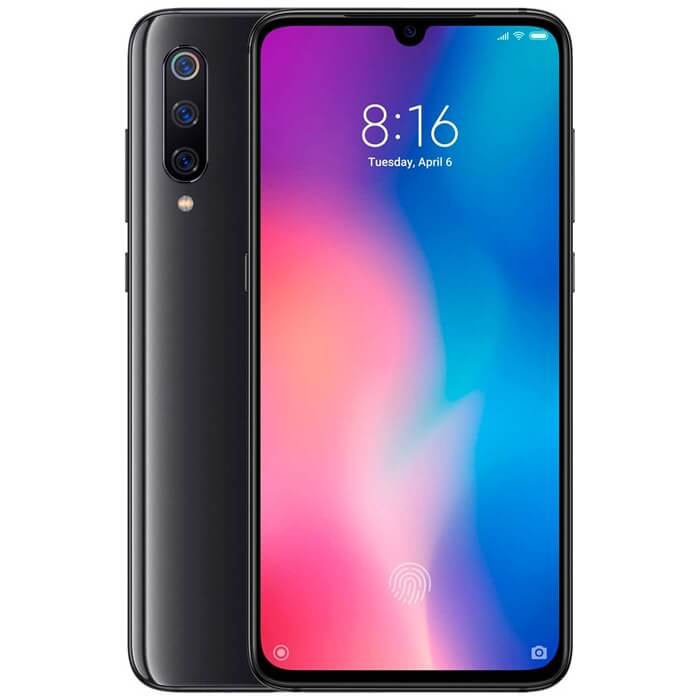 The average price is 37,990 rubles.
The average price is 37,990 rubles.
Characteristics:
- smartphone with Android 9.0
- support for two SIM-cards
- screen 6.39 ″, resolution 2340 × 1080
- three cameras 48 MP / 16 MP / 12 MP, autofocus
- memory 128 GB, without slot for memory cards
- 3G, 4G LTE, LTE-A, Wi-Fi, Bluetooth, NFC, GPS, GLONASS
- RAM 6 GB
- battery 3300 mAh
- weight 173 g, WxHxT 74.67 × 157.50 × 7.61 mm
At the moment, it is the most inexpensive smartphone with a good camera, making it to the top ten of the DxOMark smartphone rating.
The Mi 9 uses Qualcomm's flagship Snapdragon 855 processor. It also features a Samsung OLED screen.
At the top of the display is a small teardrop notch for the front camera. It can be used to quickly unlock the device by face.
The Mi 9 has a trio of rear cameras, the main one being a 48MP camera with Sony's IMX586 sensor.
While some competitors, such as the Honor View20, cleverly include the zoom function by combining multiple images taken at 48MP into one, the Mi 9 does it in the usual way - with a 2x optical zoom telephoto lens.
The main camera of the Mi 9 smartphone captures video in up to 4K resolution, which gives excellent video with a lot of detail.
pros: excellent value for money, it only takes 45 minutes to reach 90% of the battery charge.
Minuses: No waterproofing, no 3.5mm headphone jack, battery not too large for a device with such powerful performance.
7. HUAWEI P20 Pro
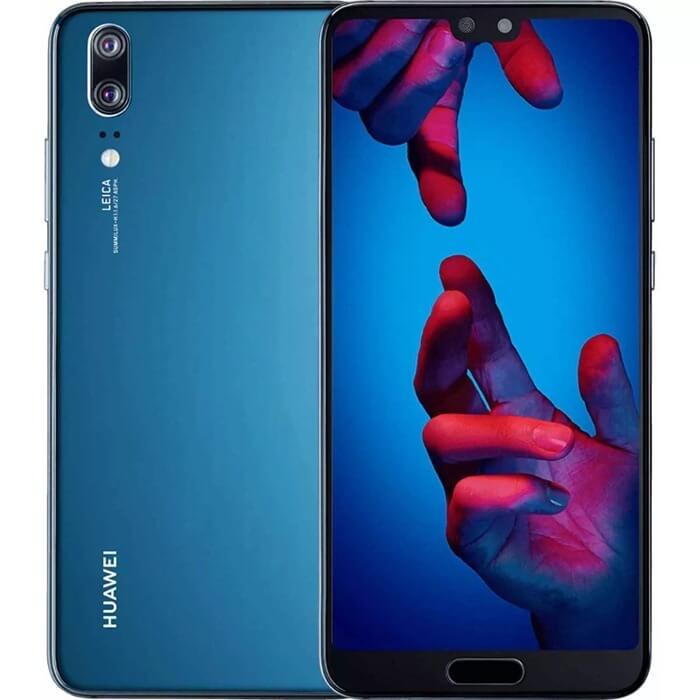 The average price is 42,990 rubles.
The average price is 42,990 rubles.
Characteristics:
- smartphone with Android 8.1
- support for two SIM-cards
- screen 6.1 ″, resolution 2240 × 1080
- three cameras 40 MP / 20 MP / 8 MP, autofocus
- memory 128 GB, without slot for memory cards
- 3G, 4G LTE, LTE-A, Wi-Fi, Bluetooth, NFC, GPS, GLONASS
- RAM 6 GB
- battery 4000 mAh
- weight 180 g, WxHxT 73.90x155x7.80 mm
The P20 Pro received 109 points from DxOMark experts, not for its beautiful appearance, but thanks to an innovative camera system that was developed in close collaboration with Leica. It includes:
- main 40 MP sensor with a physical size of 1 / 1.7 inches;
- additional 20 MP monochrome sensor;
- and an 8 MP telephoto lens.
The rear camera on the P20 Pro is so good that it allows you to take clear, detailed pictures even in semi-darkness.
This device's camera app uses the Master AI system to automatically apply software enhancements that best match the shot.
The smartphone can recognize many scene modes, including food, cat, dog, flowers, close-up, night, text, greenery, etc.
In addition, there is a Pro Mod app that lets you shoot manually. You can change the settings for focus, ISO, shutter speed, exposure and white balance.
Video is shot at an ultra-high frequency of 960 frames per second. There is also a slow-mo mode, as well as an improved OIS mode and 3x optical zoom and 5x hybrid.
But the "stuffing" of the P20 Pro is slightly inferior to the more advanced P30 Pro. Its HiSilicon Kirin 970 processor is powerful but not as powerful as the latest Kirin 980.
pros: IP67 waterproof, large battery, fast charging.
Minuses: no headphone jack.
6.Samsung Galaxy S10 Plus
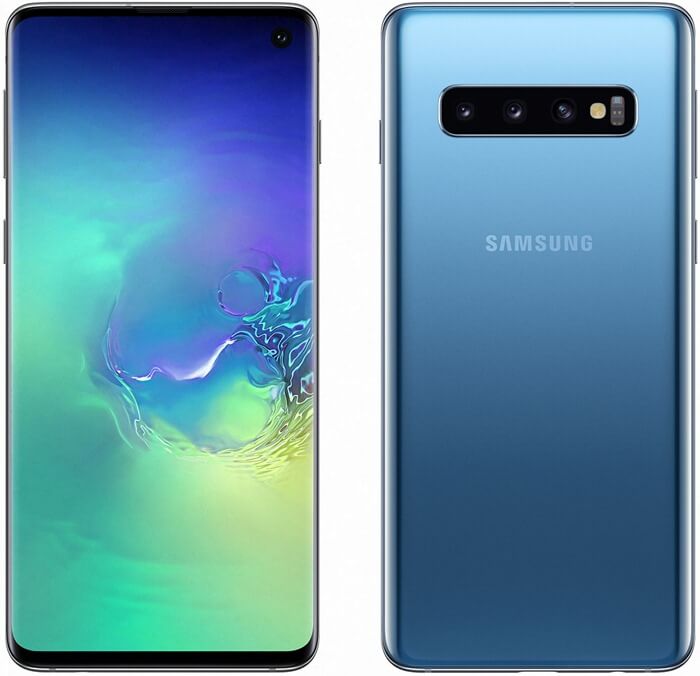 The average price is 124,990 rubles.
The average price is 124,990 rubles.
Characteristics:
- smartphone with Android 9.0
- support for two SIM-cards
- screen 6.4 ″
- three cameras 16 MP / 12 MP / 12 MP, autofocus
- memory 1024 GB, memory card slot
- 3G, 4G LTE, LTE-A, Wi-Fi, Bluetooth, NFC, GPS, GLONASS
- RAM 12 GB
- battery 4100 mAh
- weight 175 g, WxHxT 74.10 × 157.60 × 7.80 mm
Don't be intimidated by the fact that the Galaxy S10 Plus's main camera sensor is "only" 12 MP. Sensors, which "on paper" appear as 40 MP and 48 MP, almost always have a real resolution of 10 MP and 12 MP, respectively, when shooting.
Also encouraging is Samsung's commitment to 4K video quality, as well as the addition of new digital video stabilization and HDR10 + support for ultra-high contrast video.
To meet the HDR10 + standard, Samsung had to develop an OLED panel that could dynamically adjust based on frame metadata.
The maximum display brightness is 650 nits when manually activated. However, if auto tuning is enabled, the system can increase the display brightness up to 1000 nits.
An Exynos 9820 processor paired with 8 or 12 GB of RAM is enough to quickly run any mobile applications and games at ultra settings.
pros: great camera app, very bright screen, IP68 waterproof and dustproof, 3.5mm audio jack.
Minuses: very slippery due to Gorilla Glass 6 on the front and Gorilla Glass 5 on the back.
5. HUAWEI Mate 20 Pro
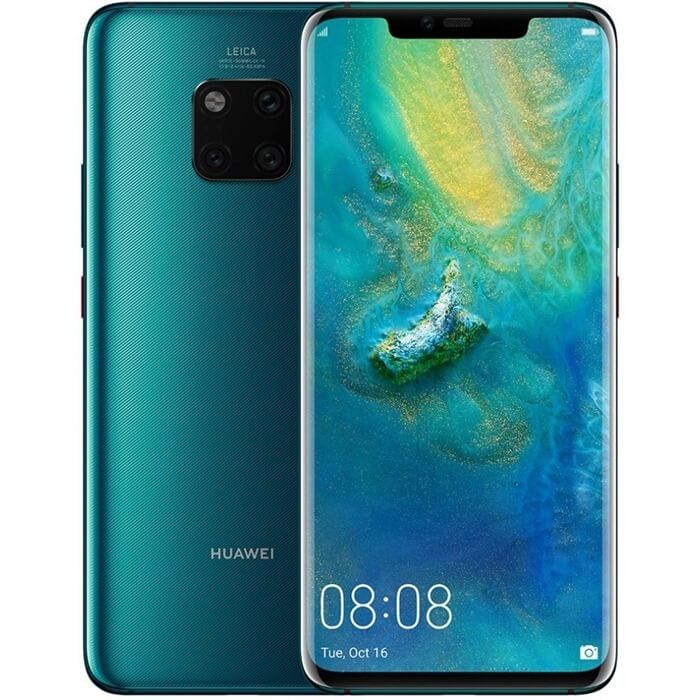 The average price is 55,900 rubles.
The average price is 55,900 rubles.
Characteristics:
- smartphone with Android 9.0
- support for two SIM-cards
- screen 6.39 ″, resolution 3120 × 1440
- three cameras 40 MP / 20 MP / 8 MP, autofocus
- memory 256 GB, memory card slot
- 3G, 4G LTE, LTE-A, Wi-Fi, Bluetooth, NFC, GPS, GLONASS
- RAM 8 GB
- battery 4200 mAh
- weight 189 g, WxHxT 72.30 × 157.80 × 8.60 mm
Ranked 5th among smartphones with the best camera of 2019, the Mate 20 Pro has a triple-lens system like the P20 Pro. But there is a big difference between these two devices.
- The Mate 20 Pro lacks the monochrome 20MP sensor found on the P20 Pro. This can be a disadvantage for those who take retro black and white photographs.
- Instead of a monochrome lens, the manufacturer installed an ultra wide-angle lens in the Mate 20 Pro.
- The device has a 3x optical zoom, which is increased to 5x with digital enhancement.
- The Mate 20 Pro also uses what is called the AI Camera Assistant to help you capture the brightest and most detailed pictures possible. It can be found in the Photos section of the camera app.
- Another feature of the rear camera is predictive autofocus. It allows the camera to take a picture before and after pressing the (virtual) shutter button.
When it comes to manual camera control, there is a lot you can do in Pro mode. For example, change ISO from 50 to 6400, change exposure values and shutter speed.
As an excellent camera phone, the HUAWEI Mate 20 Pro is also flawless in hardware. Inside it is a fast HiSilicon Kirin 980 processor and a Mali-G76 MP10 video processor, which can easily run any of the newest games at maximum settings.
pros: waterproof, wireless and fast charging.
Minuses: no 3.5mm audio jack, LG screen turns green over time.
4. OnePlus 7 Pro
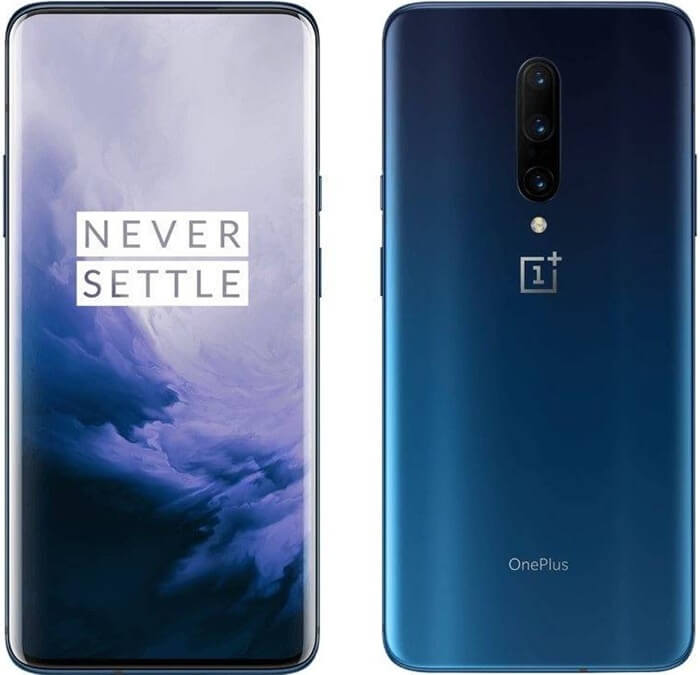 The average price is 56,950 rubles.
The average price is 56,950 rubles.
Characteristics:
- smartphone with Android 9.0
- support for two SIM-cards
- screen 6.67 ″, resolution 3120 × 1440
- three cameras 48 MP / 8 MP / 16 MP, autofocus
- memory 256 GB, without slot for memory cards
- 3G, 4G LTE, LTE-A, Wi-Fi, Bluetooth, NFC, GPS, GLONASS
- RAM 8 GB
- battery 4000 mAh
- weight 206 g, WxHxT 75.90 × 162.60 × 8.80 mm
OnePlus has made sure that this year's flagship keeps up with the competition by offering a feature rich and versatile main camera setup.
7 Pro is equipped with:
- A 48MP Sony IMX586 main camera with f / 1.6 aperture, optical image stabilization (OIS) and a dedicated seven-element lens that OnePlus says should help remove distortion at the edge of the frame.
- Directly above the main sensor is a secondary 16-megapixel ultra-wide-angle camera with f / 2.2 aperture and a wide 117-degree field of view.
- And at the bottom hides an 8-megapixel telephoto lens with f / 2.4 aperture and OIS and 3x optical zoom.
In natural light, the 7 Pro takes shots that are on par with any other high-quality camera phone, with the exception of the Huawei P30 Pro, which offers a wider dynamic range. And the lossless 3x optical zoom also means that framing subjects and scenes is no longer a waste of effort, and you'll get an impressive amount of detail in your photos.
In terms of "stuffing" OnePlus 7 Pro is comparable to the most expensive models from Samsung and HUAWEI. It is equipped with liquid cooling and 7nm top-end Qualcomm Snapdragon 855 processor. This model also has a feature called "RAM Boost". It helps to reduce the loading time of applications that you regularly use.
pros: is an fastest smartphone of 2019 according to Antutu tests.
Minuses: hard to hold with one hand, no 3.5mm audio jack.
3. Honor 20 Pro
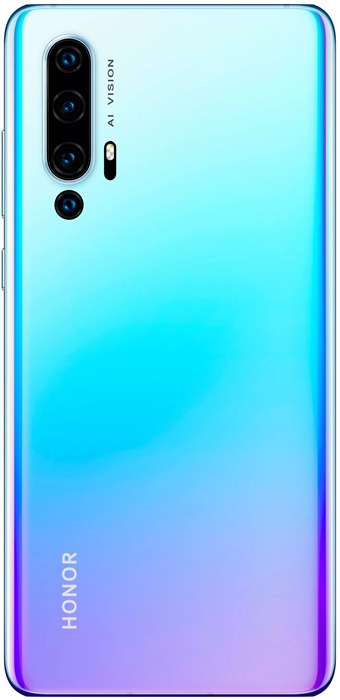 The average price is 59,990 rubles.
The average price is 59,990 rubles.
Characteristics:
- smartphone with Android 9.0
- support for two SIM-cards
- screen 6.26 ″, resolution 2340 × 1080
- four cameras 48 MP / 16 MP / 8 MP / 2 MP, autofocus
- memory 256 GB, without slot for memory cards
- 3G, 4G LTE, Wi-Fi, Bluetooth, NFC, GPS, GLONASS
- RAM 8 GB
- battery 4000 mAh
- weight 182 g, WxHxT 73.97 × 154.60 × 8.44 mm
The Honor 20 Pro boasts the same impressive camera specs as the Huawei P30 Pro (not surprising since Honor is Huawei's youth sub-brand).
On the back of the smartphone is a four-camera Leica system:
- the main camera with a resolution of 48 MP has a maximum sensitivity of ISO 204800 and an aperture of f / 1.4 - the largest of all camera phones to date. This allows you to take high quality pictures even in very low light conditions.
- 8 MP telephoto lens that helps provide 3x optical zoom. You can also zoom in up to 10x using hybrid zoom. Both the main camera and the telephoto lens have 4-axis optical image stabilization, which, combined with the incredibly high sensitivity of the sensor, should help eliminate any blur from camera shake, even in very dark lighting.
- 16MP ultra wide-angle camera with a huge 117-degree field of view.
- 2 MP macro camera.
The Honor 20 Pro has a 6.26-inch 1080 × 2340 (412ppi) screen with bezels so thin that the screen-to-body ratio is 91.7%.
There is a 32MP selfie camera in the upper left corner of the screen.
Like other flagship 2019 smartphones from Honor and HUAWEI, the 20 Pro is powered by a HiSilicon Kirin 980 processor, Mali-G76 MP10 GPU and 8GB of RAM. This trio is more than enough for the toughest challenges you put on your smartphone.
pros: design with the effect of multidimensional dynamic holography, a capacious battery, there is a quick charge, charging the smartphone up to 50% in half an hour.
Minuses: No time-of-flight camera like HUAWEI P30 Pro, no MicroSD slot, no 3.5mm headphone jack, no moisture and dust resistant.
2.Samsung Galaxy S10 5G
 Average price - not yet on sale in Russia.
Average price - not yet on sale in Russia.
Characteristics:
- smartphone with a good camera on Android 9.0
- support for two SIM-cards
- screen 6.7 ″, 3040x1440
- three cameras 16 MP / 12 MP / 12 MP, autofocus
- 512 GB memory, memory card slot
- 3G, 4G LTE, 5G, LTE-A, Wi-Fi, Bluetooth, NFC, GPS, GLONASS
- RAM 8 GB
- battery 4500 mAh
- weight 198 g, WxHxT 77.10 × 162.60 × 7.90 mm
Next to the 6.7-inch Galaxy S10 5G, even its "brother" - Galaxy S10 Plus will feel small. The massive Infinity-O display has a wide cutout for the 10MP front camera. It also has an integrated ultrasonic fingerprint sensor.
On the back of the S10 5G, you'll see an array of four cameras:
- 12 megapixel sensor;
- wide-angle 16-megapixel sensor;
- 12 megapixel telephoto lens;
- time-of-flight (ToF) camera.
Curiously, the S10 5G has two ToF sensors at once - one on the back and one on the front, which allows you to create portraits with a bokeh effect with a more accurate separation between the foreground and background.
The main 12MP dual-aperture camera on the back of the S10 5G can take phenomenal photos even without using ToF technology. Even in low light conditions, the S10 5G will make all darkened details visible.
Oddly enough, the S10 5G is actually a slightly less powerful smartphone than the Galaxy S10 Plus, with its 12GB of RAM and 1TB of flash storage. Nevertheless, the device does not look like a black sheep in the S10 family. With the latest Snapdragon 855 chipset and 8GB of RAM, the S10 5G ranks among the fastest Android phones.
pros: 3.5mm headphone port, powerful battery, fast charging, other Qi-compatible devices can be wirelessly charged.
Minuses: Due to the size and weight, the smartphone is difficult to operate with one hand and will likely be expensive.
1. HUAWEI P30 Pro
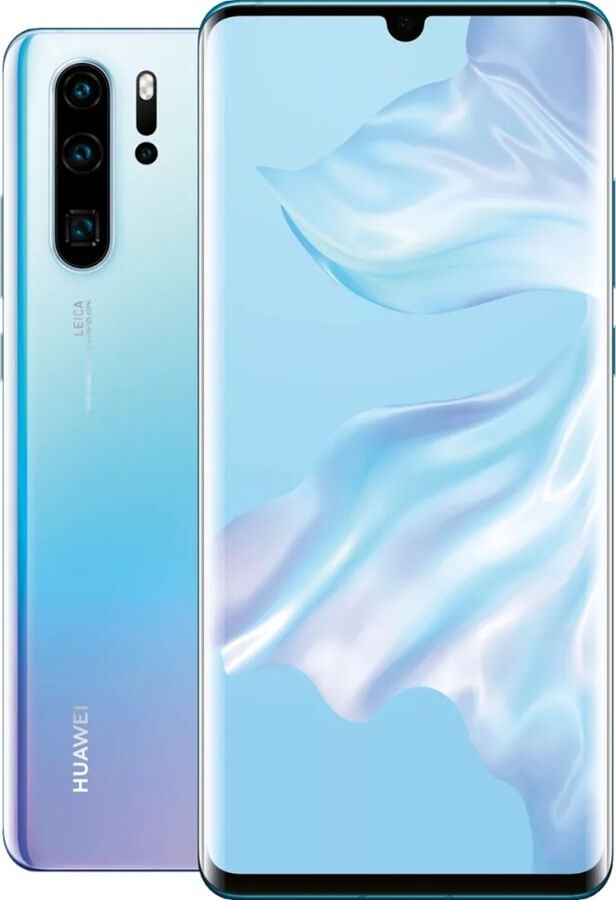 The average price is 69,990 rubles.
The average price is 69,990 rubles.
Characteristics:
- smartphone with Android 9.0
- support for two SIM-cards
- screen 6.47 ″, resolution 2340 × 1080
- three best cameras 40 MP / 20 MP / 8 MP, autofocus
- memory 256 GB, memory card slot
- 3G, 4G LTE, LTE-A, Wi-Fi, Bluetooth, NFC, GPS, GLONASS
- RAM 8 GB
- battery 4200 mAh
- weight 192 g, WxHxT 73.40x158x8.41 mm
The DxOMark Smartphone Camera Ranking winner mixes "mind-blowing" features with "could be better."

First, about the "mind-blowing": the smartphone has four cameras on the back of the case.
- 40 MP (wide-angle lens, f / 1.6, OIS);
- 20 MP (ultra wide angle lens, f / 2.2);
- 8 MP (telephoto, f / 3.4, OIS);
- and a time-of-flight camera for better depth perception.
In addition to these features, the rear camera of the P30 Pro has excellent zoom capabilities: 5x optical zoom and 10x hybrid zoom.
Perhaps the most important, albeit least obvious, upgrade to a better camera over the P20 Pro is the new RYYB sensor in the main camera. According to the manufacturer, the use of red-yellow-yellow-cyan photocells on the surface of the image sensor, rather than the traditional red-green-green-blue Bayer filter, provides a colossal light sensitivity - 40% higher than the P20 Pro.
Now you understand why DxOMark selects P30 Pro as the best smartphone camera of 2019?
There is a dewdrop notch on the front of the P30 Pro that houses the best 32MP smartphone selfie camera. It will not distract you from viewing the content of the OLED screen with a resolution of 2240 × 1080 pixels and 398 ppi.
This is where "could have been better." With its 398 ppi, the P30 Pro's screen looks disappointing on paper. However, with less pixel consumption, battery life may be longer.
When it comes to performance, the P30 Pro can only be admired. It is equipped with the top-end HiSilicon Kirin 980 processor, which is among the top ten fastest mobile platforms. So you won't have any problems with multitasking.
pros: there is fast and wireless charging, dust and water resistance.
Minuses: Instead of the standard headphone jack, there is a USB-C connector.

